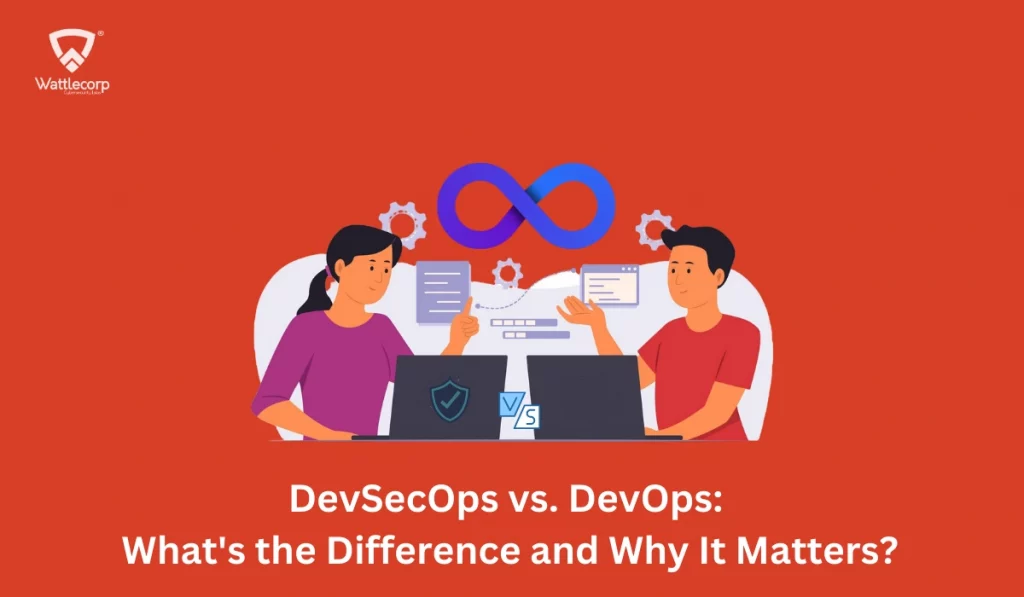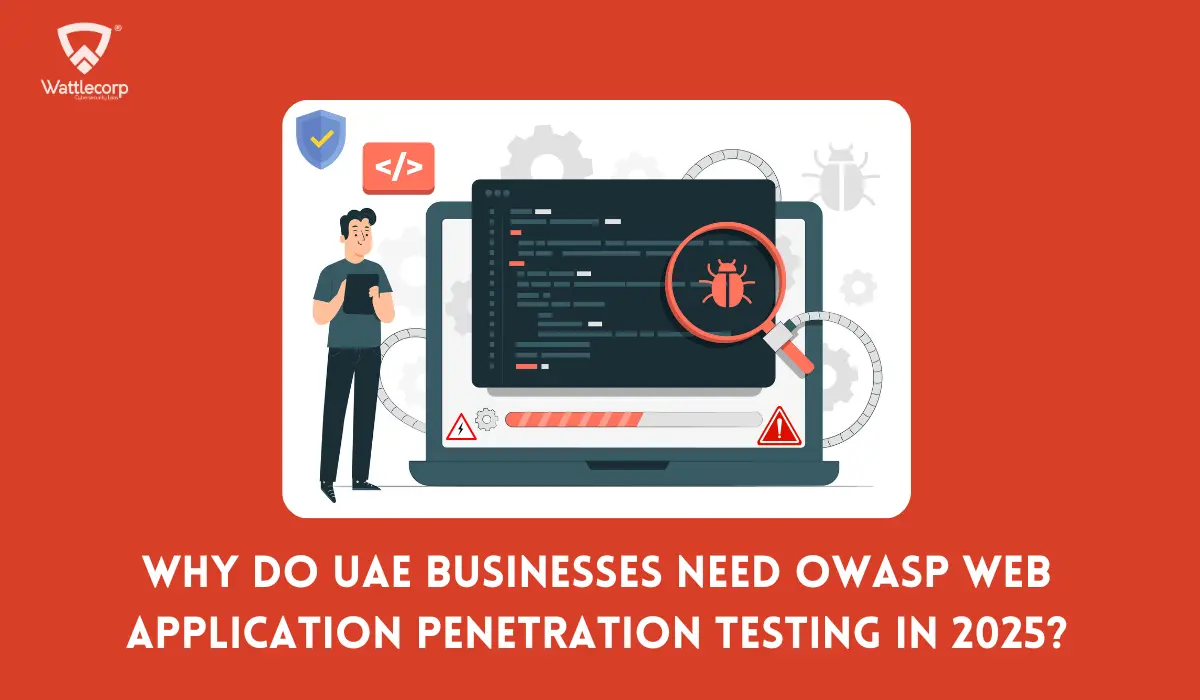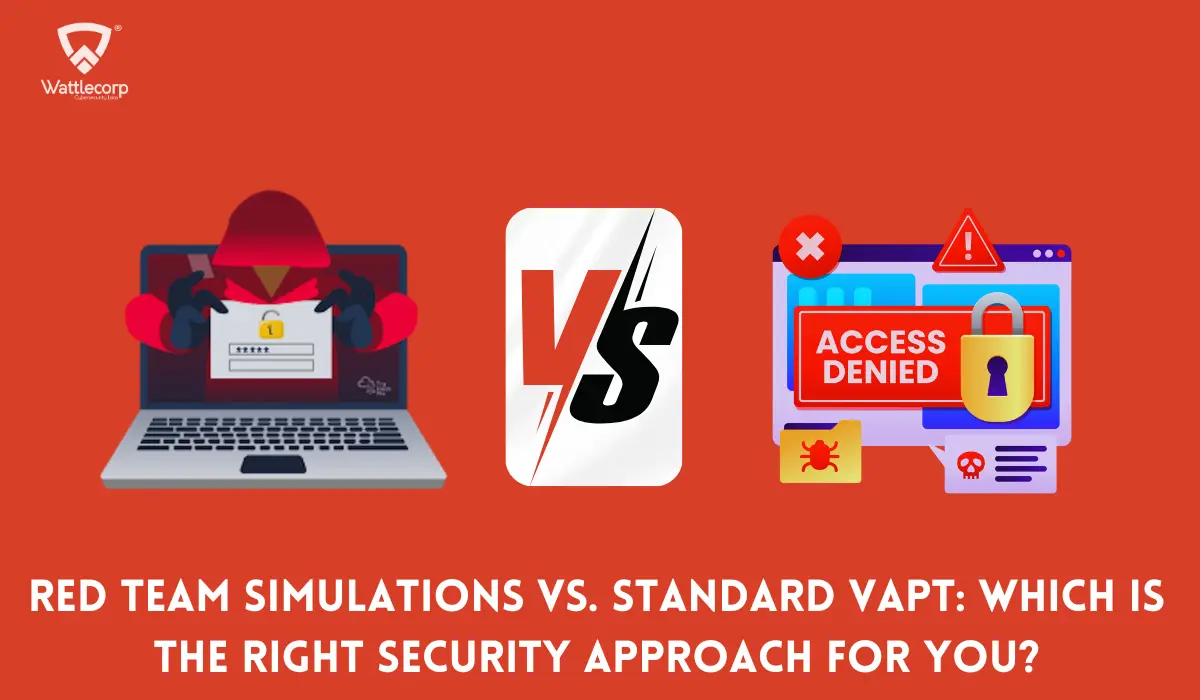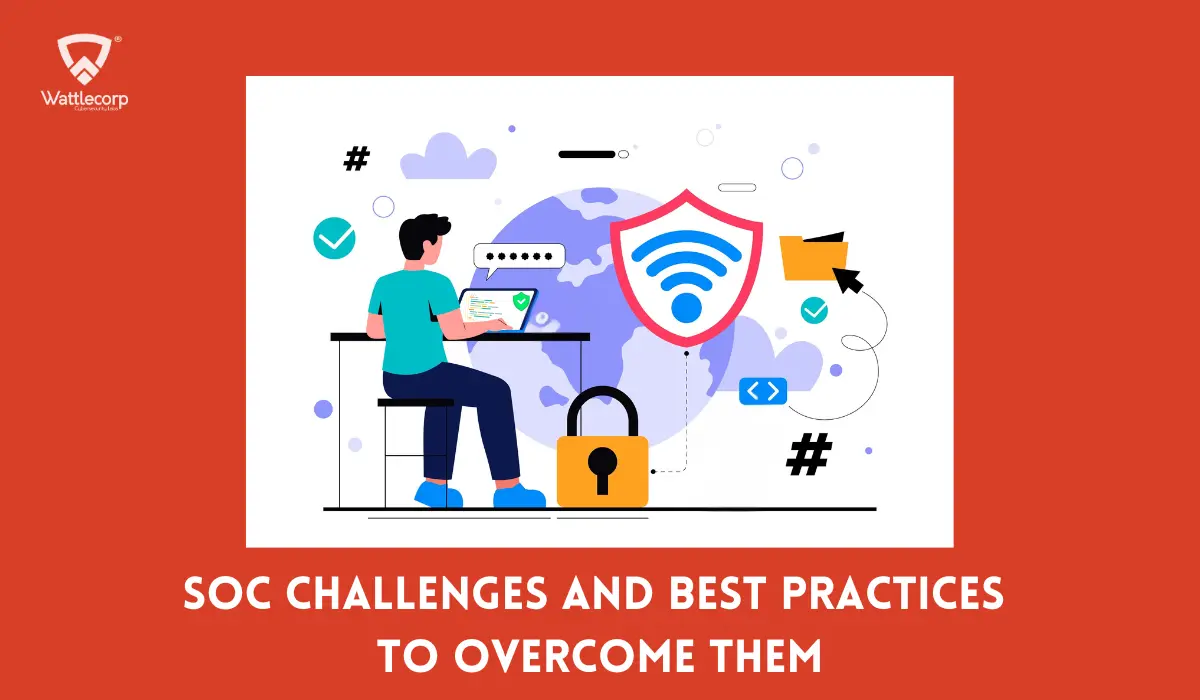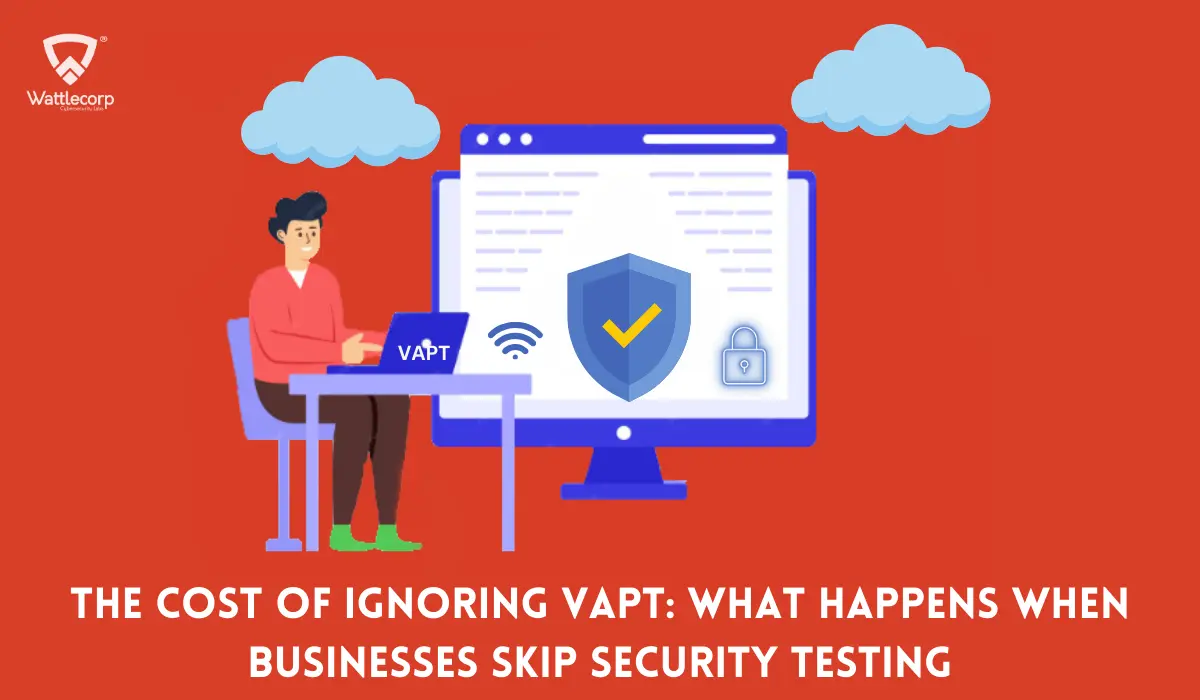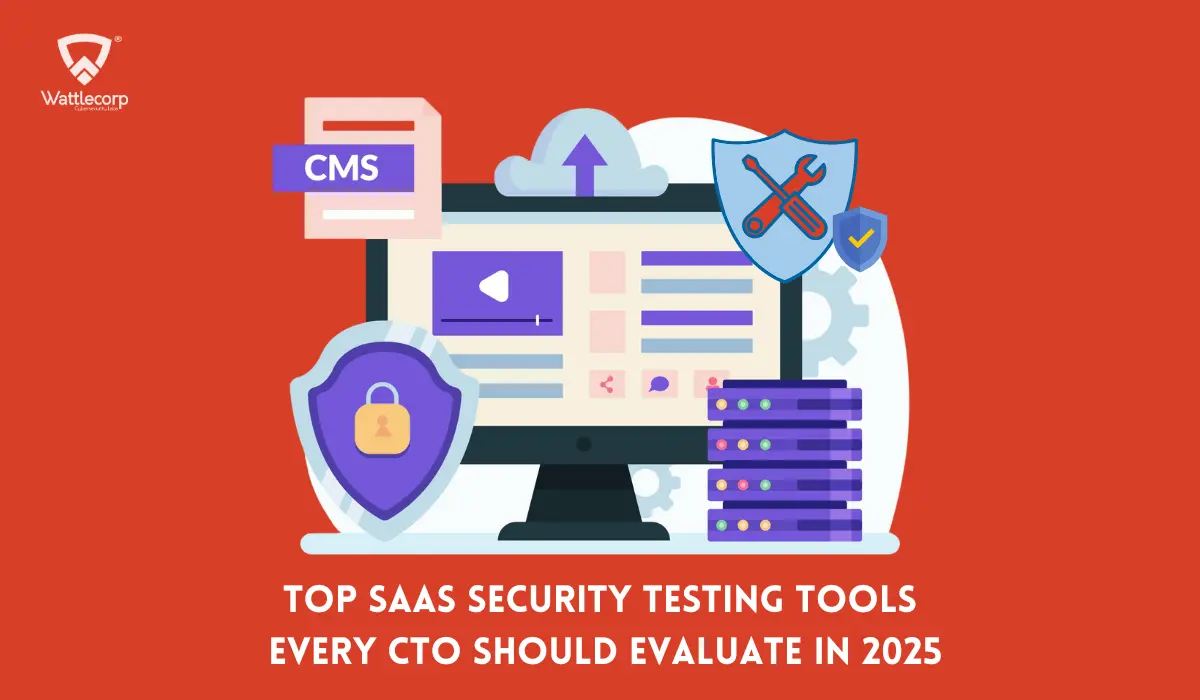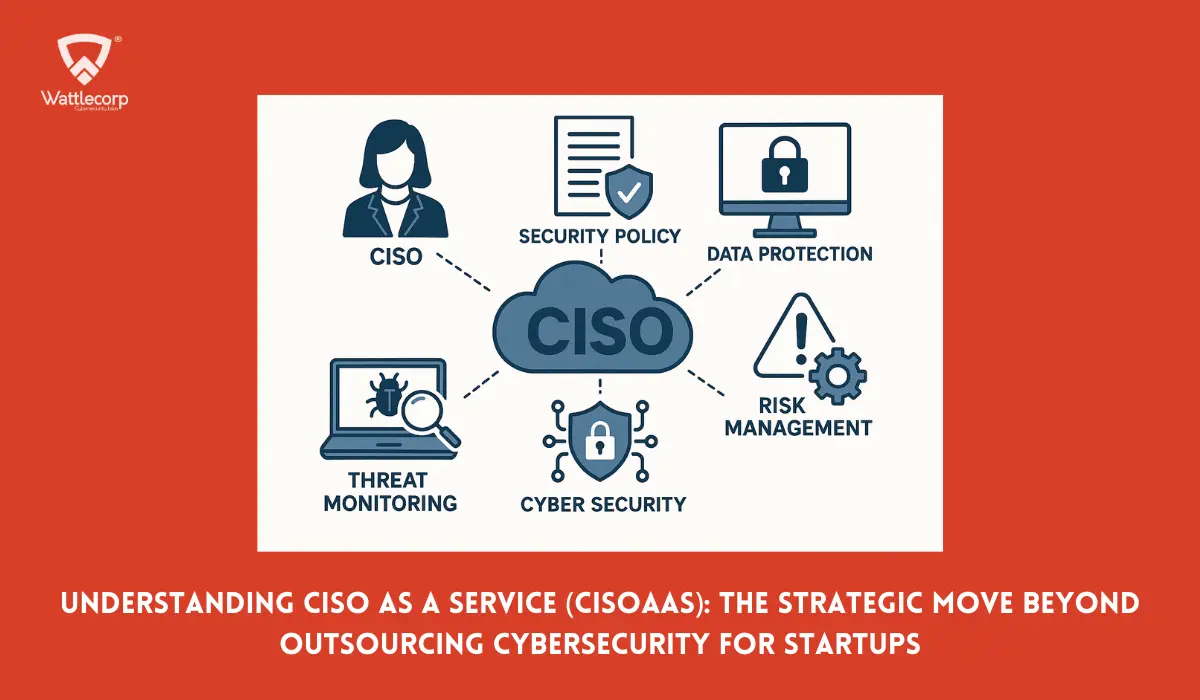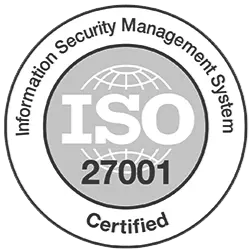DevSecOps vs. DevOps models have been prevalent choices among businesses to augment their software development projects. These models are known for their potential to ensure code efficiency and code security. However, it is important to know and learn the differences between DevOps Vs. DevSecOps.
Though these models share many similar features, they are not identical. In this post, we’ve explained the differences in detail, and described the features of DevOps and DevSecOps models in this context. We will also help you understand the approach that works right for your business. Let’s quickly dive into their key differences.
Table of Contents
Toggle- What is DevOps?
- What is DevSecOps? Importance of DevSecOps
- DevOps Vs. DevSecOps: An Overview of Similarities
- What is the Difference Between DevOps and DevSecOps?
- Benefits of Implementing DevSecOps
- Transitioning From DevOps to DevSecOps
- Things to Avoid While Transitioning From DevOps to DevSecOps
- DevOps vs DevSecOps: Which One to Pick?
- DevSecOps vs. DevOps FAQs
What is DevOps?
As a collaborative organizational model, DevOps is involved in combining the software development team and the operations team. It lets IT departments fulfill their expectations and work on efficiency.
Organizations that adopt the DevOps approach usually hire generalists instead of specialists. This is because DevOps experts often hold the background and expertise in system administration and coding tasks.
Advantages of DevOps Implementation
DevOps implementation helps with numerous advantages. It boosts software delivery, improves communication, and scales collaboration.
Additionally, it promotes prompt problem detection and resolution. Precisely, DevOps augments an efficient and user-specific software development lifecycle.
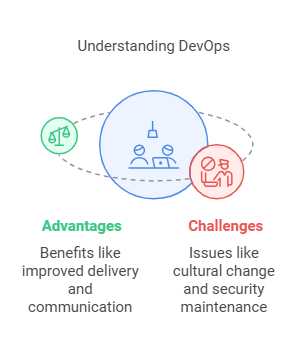
DevOps: Challenges and Limitations
Besides these advantages, DevOps also has its challenges and drawbacks. DevOps implementation can face hurdles as it demands adequate training, coping with cultural change, and security maintenance.
What is DevSecOps? Importance of DevSecOps
DevSecOps works out of the DevOps process and builds around its framework. It focuses on security integration along the entire SDLC (Software Development Lifecycle). It is essential while you work in the cloud, and need to adhere to certain practices and standards.
As both models are culturally similar and adopt automation, this can confuse the audiences. However, these models hold different business goals. All DevSecOps experts use DevOps, but the vice versa may not be true.
DevOps deals with communication among various teams to bring high efficiency and produce great collaboration. It envisions breaking down silos and reducing the key factors that could have led to a slow-paced SDLC.
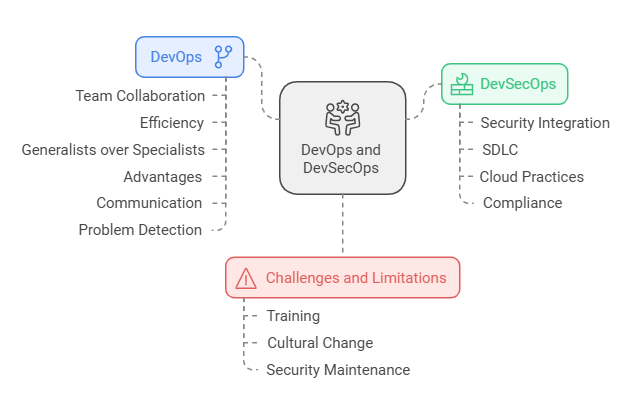
DevSecOps works based on integrating security in the earlier phases for active development rather than addressing it post-code execution. It strengthens the deployment security and underlines compliance by addressing security issues as they appear.
DevOps Vs. DevSecOps: An Overview of Similarities
DevSecOps and DevSecOps are not the same, but they have many common aspects. Let’s go through them in detail:
1.Mindset/Culture
They emphasize unifying separate departments. Hence, they share a similar culture. DevOps ensures combining the IT teams and development teams to boost harmony and collaboration. While DevSecOps nurtures cooperation among security, IT, and development departments. DevOps culture minimizes bottlenecks and improves efficiency while DevSecOps is responsible for reducing development vulnerabilities.
These also use common tools and practices. DevSecOps can be your option when you emphasize more on securing your software development process for your software development process.
2.Automation
DevOps and DevSecOps automation offer a Continuous Integration and Continuous Development (CI/CD) pipeline, which facilitates the continuous integration and continuous deployment of software. Using automation, you can quickly deploy updates in DevOps with an efficient feedback loop that connects operations and development teams.
Automation and CI/CD pipelines turn DevOps implementation advantageous due to the hassle-free software development and releases. While considering DevSecOps, minimizes human error with automation for a secure methodology. Both models have automation in common for process efficiency. They use tools like Kubernetes and Docker for automation.
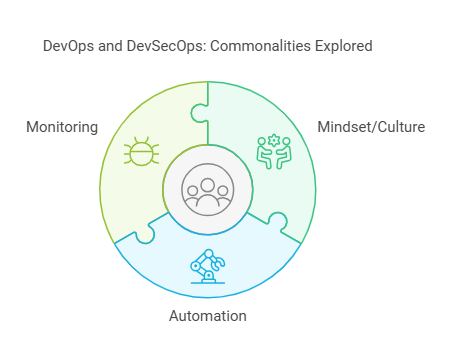
3.Monitoring
Businesses would need to work on their existing code or modify the code in the future. Hence the software development process demands active monitoring. The active software/ application and code monitoring makes an inevitable aspect of the process for both DevOps and DevSecOps models. DevSecOps involves one more step that makes sure that the code is free of vulnerabilities. So it also checks for potential vulnerabilities at each phase.
What is the Difference Between DevOps and DevSecOps?
DevSecOps and DevOps are methodologies of software development, and while they have many common factors, they have clear differences in their approach and process. Let’s discuss the differences between DevSecOps and DevOps in detail:
1.Security Process
DevOps and DevSecOps differ in terms of integrating security. While DevOps manages collaboration between development and operations teams to augment the software development lifecycle, it doesn’t incorporate security as a major part of its process.
However, DevOps lay security as the major factor in software development and delivery. It introduces security considerations and advocates ‘security as a code’ to make sure that each development stage considers the potential security implications. It fosters proactive identification and vulnerability mitigation instead of addressing them post-development after a security incident strikes.
2. Team and Collaboration
In the DevOps ecosystem, the major collaboration lies between the IT operations team and developers that ensure CI/CD. It aims to build an environment in which developing, testing, and software releases occur more frequently, efficiently, and rapidly.
On the other hand, DevSecOps expands the collaborative culture to incorporate security teams too. Everyone in the SDLC holds the accountability for security maintenance. It breaks the conventional silos among the teams. With a ‘security by all and for all’ principle, it emphasizes security as a shared responsibility.
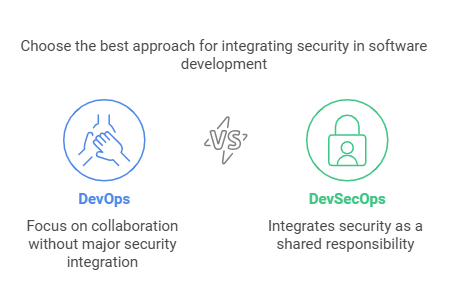
3. Security Integration Timing
In a conventional DevOps model, teams adopt security practices in a different process, usually taken towards the end of SDLC. In the case of late-stage integration, you can face complications and challenges, particularly when you identify major security glitches. DevOps handles this issue with integration of security practices in the initial phase and across all phases of development. It adopts a ‘shift left’ security approach, i.e., identification of potential issues much earlier in the process, resulting in highly reliable and secure end products.
4. Tools Used
Both models use various tools to streamline process management and automation, however, DevSecOps particularly utilizes security-specific tools built to automate and integrate security checks. These range from code analysis tools, continuous monitoring tools, and automated security testing tools.
Also Read: What is DevSecOps and Why is It Most Needed in 2025?
Benefits of Implementing DevSecOps
In the modern scenario, businesses depend on sophisticated on-premises, cloud-specific, and hybrid environments to streamline their IT operations.
The continuous creation of new applications and updates adds to this complexity. Many businesses use microservices and cloud containers for in-house application development.
Whenever an employee modifies or creates components connected via the Internet, a new vulnerability might expose the application to threats. The additional complexities like increasing development, automation of application delivery process components, and splitting applications to microservices can cause more risk. Developers often commit small mistakes, thus keeping assets vulnerable to cyber threats.
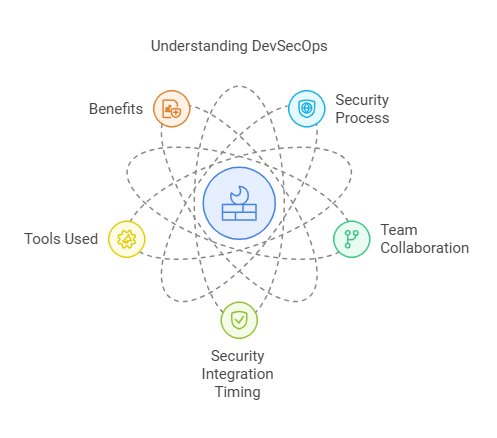
Software engineering experts also use automation tools for the configuration and maintenance of containers, image registries, servers, or code repositories. Such components can cause increased security vulnerabilities.
Though standard DevOps workflows give you great business value, they can increase the chances of risks. Hence it is essential to focus on security with DevSecOps.
Transitioning From DevOps to DevSecOps
In the initial phase, it is essential to help team members get familiarized with the ideas behind security. After everyone is on board with the process, organizations can make necessary changes to the development process. Employees should recognize the advantages of implementing app security right from the beginning of SDLC.
Though there exist different security testing methods, it is not easy to identify which method works best for a particular project or organization. Let’s have an overview of the basic testing methods:
- Static Application Security Testing, or SAST – to analyze code and detect weaknesses.
- Dynamic Application Security Testing or DAST – Involves admins that detect vulnerabilities and security bottlenecks.
- Interactive Application Security Testing or IAST– It combines DAST and SAST to execute software instrumentation that screens applications.
- Runtime Application Self-Protection or RASP- It uses real-time application data to ensure auto identification and remediation of threats without involving an administrator.
- Software Composition Analysis or SCA– It identifies open libraries and third-party libraries in an application, detects known vulnerabilities, and notifies users about patches or updates available.
Code quality assessment is an essential phase in DevSecOps. It makes sure the code is stable and standard, making it convenient for the team to make it secure. Organizations should educate the developers early to foster secure coding practices and make sure all the code changes are consistently implemented.
Another factor behind transitioning to DevSecOps is to maintain security for applications that run across distributed infrastructure rather than depending upon a security perimeter.
Also Read: AWS Penetration Testing: Checklists, Tools, Strategies, and Best Practices
Things to Avoid While Transitioning From DevOps to DevSecOps
DevSecOps is a valuable addition to your process while considering security. However, there are certain things you should avoid while considering DevOps & DevSecOps best practices:
1. Selecting the wrong tools:
There are various security applications. Choosing those relevant to the code and those that satisfy the needs of your present use case/future use cases lets you eliminate a burdened transition.
2. Not involving the security team
DevSecOps is a continuous process That occurs at every phase of the development cycle. You can make Security consistent by involving the Security team from the beginning. With the help of Security experts, you can determine which tools are appropriate for your business.
3. Weighing speed over quality:
DevOps focuses mainly on speed. During the transition, the final goal is a super functional and secure pipeline. It also includes additional steps and time to make a properly integrated set of security practices.
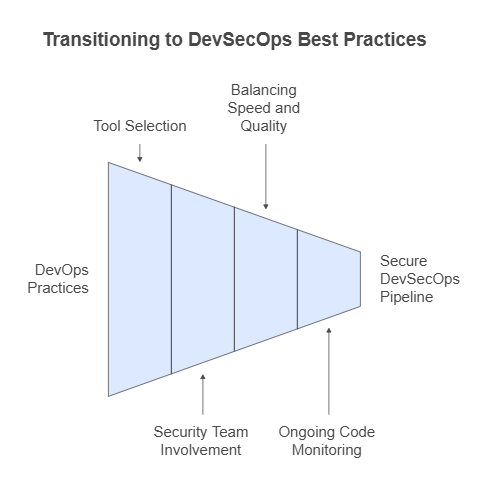
4. Lack of code monitoring
Since code constantly changes, code monitoring should be an ongoing task in the development of theDevSecOps team. Constant monitoring is necessary since new configurations or the introduction of new patches or libraries can be exposed. New vulnerabilities to the system.
DevOps vs DevSecOps: Which One to Pick?
There are different approaches and methodologies in the field of software development. DevOps and DevSecOps are two major options in the industry. Which one should you choose for the team? The major underlying difference between these models is security. DevOps emphasizes streamlining communication and collaboration among various teams, focusing on agile development and speed.
However, DevSecOps adopts a different motto-integrating security across the entire development cycle. In the modern digital age, while data breaches and cyber threats are prevalent, a strong security setup contributes well to the organization’s success. However, it might also need additional overhead and resources for training and processes.
For certain organizations, integrating security from scratch demands an additional effort. Others might prioritize flexibility and speed, which makes DevOps a great fit. Whether you go for DevOps or DevSecOps, it is important to stay aware of the potential risk management and reassess your approach constantly for successful software development.
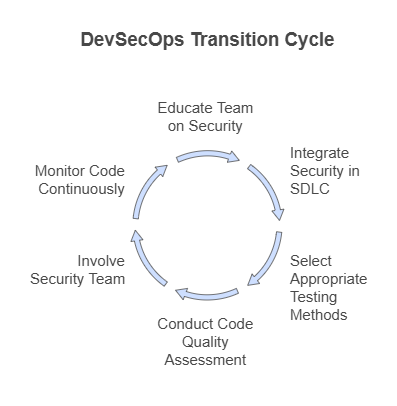
Identifying and analyzing the distinct features of DevOps and DevSecOps is crucial in this dynamic digital world. Ultimately, this should align with the specific requirements of your organization while also balancing the needs for efficiency, speed, and security in SDLC.
Adopting DevSecOps can be a more ideal, secure, and compliant process, resulting in a better product. With the help of a trusted cybersecurity services company, you can get all the required services to incorporate DevSecOps into your software development pipeline.
At Wattlecorp, we emphasize providing businesses with the leading DevSecOps Solutions, while helping your business adhere to the latest security best practices. To learn more, let’s talk!
DevSecOps vs. DevOps FAQs
1.Can an organization transition from DevOps to DevSecOps easily?
Yes. With the right source of expertise, transition from DevOps to DevSecOps is easiest. At Wattlecorp, we have a team ready to integrate security seamlessly to your existing workflows to ensure secure and most streamlined deployment and transitions.
2. What tools are commonly used in DevOps and DevSecOps?
Tools such as Jenkins, Kubernetes, OWASP ZAP, Snyk and Aqua Security are some of the tools prevalent in DevOps and DevSecOps. We use these tools to embed security in CI/CD pipelines and make the workflows efficient.
3. How do DevOps and DevSecOps impact the software development lifecycle?
DevOps scales development and deployment; whereas DevSecOps makes sure that security is encompassed in each stage. We, at Wattlecorp, enable a highly secure software development cycle with proactive addressing of vulnerabilities while keeping speed and agility alive.
